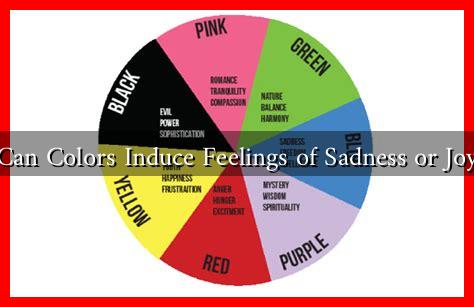-
Table of Contents
Can Colors Induce Feelings of Sadness or Joy?
Colors have a profound impact on human emotions and psychology. From the vibrant hues of a sunny day to the muted tones of a rainy afternoon, colors can evoke a wide range of feelings, including joy and sadness. This article explores the psychological effects of colors, supported by research, examples, and case studies, to understand how colors can influence our emotional states.
The Psychology of Color
The study of how colors affect human behavior is known as color psychology. This field examines how different colors can influence our emotions, perceptions, and even decision-making processes. Various studies have shown that colors can elicit specific feelings and reactions. For instance:
- Red: Often associated with passion, energy, and excitement, red can also evoke feelings of anger or aggression.
- Blue: Typically linked to calmness and serenity, blue can also induce feelings of sadness or melancholy.
- Yellow: Known for its association with happiness and optimism, yellow can stimulate feelings of joy and cheerfulness.
- Green: Often connected to nature and tranquility, green can promote feelings of relaxation and balance.
- Purple: Associated with luxury and creativity, purple can evoke feelings of mystery and introspection.
Case Studies and Research Findings
Numerous studies have been conducted to explore the relationship between color and emotion. One notable study by Andrew Elliot and Markus Maier in 2007 found that participants exposed to the color red performed better on tasks requiring attention and focus, while those exposed to blue were more creative. This suggests that colors can not only influence emotions but also cognitive functions.
Another study published in the journal “Color Research and Application” found that individuals exposed to warm colors (like red and yellow) reported higher levels of happiness compared to those exposed to cool colors (like blue and green). This aligns with the common perception that warm colors are more stimulating and energizing.
Real-World Applications of Color Psychology
Understanding the emotional impact of colors has practical applications in various fields, including marketing, interior design, and art therapy. Here are some examples:
- Marketing: Brands often use specific colors to evoke desired emotions. For instance, fast-food chains frequently use red and yellow to stimulate appetite and create a sense of urgency.
- Interior Design: Home decorators often choose colors based on the mood they want to create. Soft blues and greens can make a space feel calm and relaxing, while bright yellows can energize a room.
- Art Therapy: Therapists may use color as a tool for expression and healing. Clients are encouraged to use colors that resonate with their feelings, helping them articulate emotions that may be difficult to express verbally.
Color and Cultural Context
It’s important to note that the emotional impact of colors can vary across different cultures. For example, while white is often associated with purity and peace in Western cultures, it is linked to mourning in some Eastern cultures. Understanding these cultural nuances is crucial when considering the emotional effects of color.
Conclusion
Colors undeniably play a significant role in shaping our emotions and perceptions. From the joy evoked by bright yellows to the sadness associated with deep blues, the psychological effects of color are profound and far-reaching. As we navigate our daily lives, being aware of how colors influence our feelings can enhance our environments, improve our mental well-being, and even inform our choices in marketing and design.
In summary, the interplay between color and emotion is a fascinating area of study that highlights the power of visual stimuli in our lives. By understanding the emotional implications of colors, we can create spaces and experiences that foster joy, calmness, and overall well-being. For further reading on color psychology, you can explore resources from the Color Psychology website.

